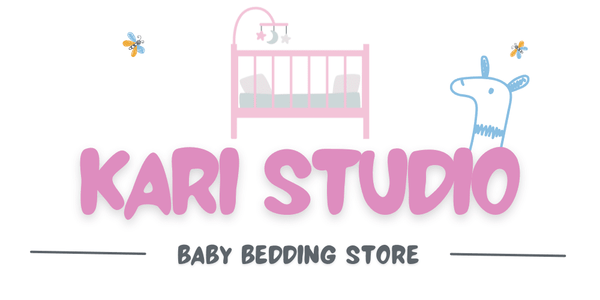Casi uno de cada tres recién nacidos llora menos y duerme más tiempo cuando se les envuelve correctamente, lo que convierte esta práctica en una de las favoritas de los padres primerizos. Un sueño de calidad en la primera infancia favorece un crecimiento saludable y reduce el estrés familiar. Saber cómo y cuándo envolver al bebé le ofrece a los padres una rutina de sueño más segura y tranquila, a la vez que lo protege a medida que sus hitos y riesgos cambian con cada nueva etapa.
Tabla de contenido
- Conceptos básicos sobre el arrullo y por qué los padres lo utilizan
- Edad recomendada e hitos clave para dejar de fumar
- Riesgos de envolver al bebé más allá del período seguro
- Alternativas al arrullo para dormir al bebé
- Guía paso a paso para dejar de usar pañales
- Respuestas de expertos a preguntas comunes sobre el arrullo
Conclusiones clave
| Punto | Detalles |
|---|---|
| Importancia del arrullo | Envolver al bebé proporciona comodidad y seguridad, imitando el ambiente del útero y potencialmente promoviendo períodos de sueño más prolongados. |
| Momento de dejar de envolver al bebé | Deje de envolver a los bebés cuando muestren signos de darse la vuelta, normalmente entre los 4 y los 6 meses, para evitar riesgos de seguridad. |
| Riesgos del envoltorio prolongado | Continuar envolviendo al bebé más allá de la edad recomendada puede provocar problemas de desarrollo y aumentar el riesgo de SMSL (Síndrome de Muerte Súbita del Lactante). |
| Estrategias para dejar de usar pañales | Transición gradual del arrullo, dejando los brazos libres y utilizando sacos de dormir, mientras se vigila la comodidad del bebé durante todo el proceso. |
Conceptos básicos sobre el arrullo y por qué los padres lo utilizan
Envolver al bebé es una técnica ancestral que ayuda a los padres a calmar y reconfortar a sus recién nacidos, recreando el ambiente seguro y acogedor del útero. Según las directrices para un sueño seguro , envolver al bebé con cuidado puede reducir significativamente el llanto y favorecer periodos de sueño más prolongados.
Las principales razones por las que los padres optan por envolver a sus bebés incluyen:
- Prevenir el reflejo de sobresalto que puede despertar repentinamente a los bebés
- Crear una sensación de seguridad y comodidad
- Ayuda a regular la temperatura corporal del bebé
- Reducir el estrés general del bebé y promover mejores patrones de sueño
Según un estudio de Pregnancy Birth Baby, envolver al bebé imita el espacio seguro y protector que experimenta antes de nacer. Al envolver suavemente a los bebés con mantas ligeras y transpirables, los padres pueden ayudarlos a sentirse seguros y, potencialmente, prolongar la duración del sueño. Si se hace correctamente, envolver al bebé puede ser una herramienta esencial para calmarlo.
Para los padres que buscan soluciones seguras para el sueño infantil, comprender las técnicas adecuadas para envolver al bebé es fundamental. ¿Qué es un saco de dormir? Puede brindar información adicional sobre estrategias alternativas para dormir a medida que su bebé crece y se desarrolla.
Edad recomendada e hitos clave para dejar de fumar
Según un estudio de Red Nose Safe Sleep, se debe dejar de envolver al bebé en cuanto muestre signos de darse la vuelta, generalmente entre los 4 y los 6 meses. Los expertos advierten que seguir envolviendo al bebé más allá de esta etapa crucial del desarrollo puede aumentar el riesgo de síndrome de muerte súbita del lactante (SMSL).
Algunos hitos clave que indican que es hora de dejar de envolver al bebé incluyen:
- Bebé intentando darse la vuelta
- Mayor movilidad y movimientos de brazos
- Liberándose constantemente del pañal
- Mostrando signos de incomodidad al estar envuelto
Healthline recomienda a los padres estar especialmente atentos alrededor de los dos meses, ya que es cuando los bebés comienzan a desarrollar habilidades motoras más avanzadas. En esta etapa, el reflejo de sobresalto disminuye y los bebés necesitan mayor libertad de movimiento. Comprender cuándo es el momento adecuado para dejar la cuna puede brindar información adicional sobre estas importantes transiciones en el desarrollo.
Los expertos en sueño hacen hincapié en que la seguridad siempre debe ser la principal consideración.
 En cuanto tu bebé muestre cualquier indicio de que empieza a darse la vuelta o de que aumenta su movilidad, es fundamental dejar de usar las técnicas tradicionales de envolverlo para garantizar su seguridad y comodidad.
En cuanto tu bebé muestre cualquier indicio de que empieza a darse la vuelta o de que aumenta su movilidad, es fundamental dejar de usar las técnicas tradicionales de envolverlo para garantizar su seguridad y comodidad.
Riesgos de envolver al bebé más allá del período seguro
Según la organización Lullaby Trust, seguir envolviendo al bebé más allá del período seguro supone riesgos importantes para su seguridad. Cuando los bebés empiezan a darse la vuelta, envolverlos puede aumentar drásticamente las probabilidades de sufrir el síndrome de muerte súbita del lactante (SMSL), sobre todo si quedan atrapados boca abajo sin poder cambiar de posición.
Los principales riesgos asociados con el uso prolongado de pañales ajustados incluyen:
- Movimiento restringido durante etapas críticas del desarrollo
- Mayor riesgo de sobrecalentamiento
- Posible displasia de cadera por vendaje inadecuado
- Capacidad comprometida para usar los brazos para el auto rescate
Healthline destaca otra preocupación fundamental: las técnicas inadecuadas para envolver al bebé pueden provocar graves complicaciones de salud. Cuando las piernas del bebé se envuelven demasiado apretadas o estiradas, pueden desarrollar problemas de cadera que pueden afectar su movilidad a largo plazo. La guía «Comprendiendo las recomendaciones para un sueño seguro» ofrece información adicional sobre cómo crear un entorno de sueño seguro para su bebé.
Los pediatras expertos destacan la importancia de que los padres estén atentos al desarrollo de su bebé. En cuanto el bebé muestre mayor movilidad o intente darse la vuelta, es fundamental dejar de envolverlo para garantizar su seguridad y favorecer su desarrollo físico natural.
Alternativas al arrullo para dormir al bebé
Cuando los bebés crecen y dejan de usar pañales tradicionales, los padres pueden explorar varias alternativas seguras para dormir que les brindan comodidad y seguridad. Según Pregnancy Birth Baby, los sacos de dormir para bebés son una excelente opción de transición, diseñados para adaptarse a los bebés que se vuelven más activos, manteniendo una sensación de calor y protección.
Entre las alternativas eficaces al método tradicional de envolver al bebé se incluyen:
Aquí tienes una comparación entre el arrullo tradicional y sus alternativas comunes para el sueño infantil:
| Característica | Pañal tradicional | Saco de dormir/Manta portátil | Alternativa a la manta ligera |
|---|---|---|---|
| Rango de edad | Recién nacidos–4-6 meses | 4 meses o más | Todas las edades (con precaución) |
| Seguridad/Comodidad | Alto | Moderado a alto | De baja a moderada |
| Restringe el movimiento | Sí | No (los brazos pueden estar libres) | No |
| Riesgo si el bebé se enrolla | Alto | Bajo | Moderado |
| Promueve un sueño más prolongado | Sí (para recién nacidos) | Sí (a medida que el bebé crece) | Variable |
| Regula la temperatura | Sí (si es transpirable) | Sí (si está correctamente ajustado) | Varía |
- Sacos de dormir con aberturas para los brazos ajustables
- Alternativas de mantas ligeras y transpirables
- Máquinas de ruido blanco para reducir los sonidos repentinos
- Rutinas consistentes para la hora de acostarse
- Chupetes para ayudar a calmar y tranquilizar a los bebés
Healthline recomienda crear un ambiente tranquilo para dormir manteniendo una rutina constante y una temperatura ambiente confortable. ¿Qué es un saco de dormir? ofrece información más detallada sobre las soluciones modernas para el sueño infantil que pueden ayudar a los padres a afrontar esta importante etapa del desarrollo.
La transición del arrullo requiere paciencia y observación. Cada bebé es diferente, por lo que los padres deben prestar atención a las señales de confort de su bebé y ajustar las estrategias de sueño en consecuencia. El objetivo es crear un entorno de sueño seguro y confortable que favorezca un desarrollo físico y emocional saludable.
Guía paso a paso para dejar de usar pañales
Según Healthline, dejar de envolver a tu bebé requiere un enfoque gradual y delicado . El método más eficaz consiste en una transición cuidadosa, paso a paso, que ayuda a tu bebé a adaptarse a una mayor movilidad, manteniendo a la vez una sensación de comodidad y seguridad.
Aquí tienes una estrategia integral para el destete:
- Empieza por dejar un brazo fuera del arrullo durante varias noches.
- Progresa extendiendo ambos brazos mientras mantienes el torso envuelto.
- Utilice mantas más ligeras y transpirables durante la transición.
- Introduce un saco de dormir o una manta para usar como prenda de vestir.
- Establece una rutina constante a la hora de acostarte para proporcionar mayor comodidad.
La organización Lullaby Trust destaca la importancia de vigilar los movimientos del bebé durante esta etapa.Las alternativas seguras e inteligentes a los protectores de cuna pueden ofrecer información adicional para crear un entorno de sueño seguro.
Recuerda que cada bebé es único. Algunos se adaptan rápidamente, mientras que otros necesitan más tiempo y paciencia. Observa las señales de confort de tu bebé y prepárate para adaptar tu enfoque según sea necesario. El objetivo final es garantizar una transición al sueño segura y cómoda que favorezca el desarrollo de su independencia.
Respuestas de expertos a preguntas comunes sobre el arrullo
Según la Dra. Jenelle Ferry de Pediatrix, envolver al bebé es una práctica compleja que requiere prestar especial atención a las etapas de desarrollo del niño. Los padres suelen tener muchas preguntas sobre cuándo y cómo dejar de envolver al bebé de forma segura para fomentar su creciente independencia.
Entre las preguntas más frecuentes sobre el uso de pañales para bebés y las respuestas de expertos se incluyen:
- ¿Cuándo debo dejar de envolver a mi bebé? Tan pronto como muestre señales de que empieza a darse la vuelta.
- ¿Puede el envoltorio perjudicar el desarrollo de mi bebé? Envolverlo durante un tiempo prolongado puede restringir su movimiento natural.
- ¿Cuáles son las señales de que mi bebé quiere soltarse? Mayor movimiento de brazos y piernas, intentos de darse la vuelta.
- ¿Cuánto tiempo es seguro seguir envolviendo al bebé en una manta? Normalmente entre 2 y 4 meses.
¿Los bebés necesitan almohadas? ofrece información adicional sobre cómo crear un entorno de sueño seguro. Como recalcan los expertos, la clave está en observar las señales de desarrollo de cada bebé y estar preparado para adaptar las estrategias de sueño en consecuencia.
Cada bebé es único, y lo que funciona para uno puede no funcionar para otro. Confía en tu instinto maternal o paternal, mantente informado y prioriza la seguridad y el bienestar de tu bebé durante esta importante etapa de su desarrollo.
Asegura un sueño seguro y cómodo para tu bebé durante la transición al arrullo.
Saber cuándo dejar de usar pañales puede ser complicado. Este artículo destaca aspectos clave como el desarrollo progresivo del bebé, riesgos para la seguridad como el síndrome de muerte súbita del lactante (SMSL) y la necesidad de una transición gradual. Si quieres crear una habitación acogedora que fomente la independencia y la seguridad de tu bebé, elegir la ropa de cama adecuada es fundamental. Nuestros artículos esenciales para la habitación del bebé, hechos a mano en Kari Studio, están diseñados pensando en la comodidad y la protección, confeccionados con telas suaves e hipoalergénicas para mantener a tu pequeño seguro mientras deja de usar pañales.

Descubre nuestra colección premium de ropa de cama para bebés , personalizable según el estilo de la habitación. Para un entorno de sueño seguro y completo, considera integrar nuestros protectores de cuna trenzados y barandillas, que facilitan la transición del arrullo a una mayor libertad de movimiento. Empieza a crear un espacio seguro y confortable hoy mismo en Kari Studio y regala a tu bebé un sueño reparador y seguro.
Preguntas frecuentes
¿Cuándo debo dejar de envolver a mi bebé?
Se debe dejar de envolver al bebé en cuanto muestre signos de darse la vuelta, generalmente entre los 4 y los 6 meses de edad. Es importante priorizar la seguridad en esta etapa de desarrollo.
¿Cuáles son las señales de que mi bebé quiere liberarse del arrullo?
Entre las señales se incluyen un aumento en los movimientos de brazos y piernas, intentos de darse la vuelta y liberarse constantemente del arrullo. Los bebés también pueden mostrar signos de incomodidad al estar arrullados.
¿Puede el uso prolongado de pañales ajustados perjudicar el desarrollo de mi bebé?
Sí, envolver al bebé durante mucho tiempo puede restringir sus movimientos naturales y aumentar el riesgo de afecciones como la displasia de cadera. También puede generar problemas de seguridad, sobre todo si el bebé se da la vuelta mientras está envuelto.
¿Qué alternativas puedo usar en lugar de envolver al bebé?
Entre las alternativas al arrullo tradicional se incluyen sacos de dormir, mantas para dormir y mantas ligeras y transpirables. Estas opciones permiten una mayor libertad de movimiento sin dejar de brindar comodidad y seguridad.
Recomendado
- Alternativas seguras e inteligentes a los protectores de cuna para bebés – KariStudio
- ¿Qué es un saco de dormir? Comprender sus beneficios y su uso.
- Seguridad en los protectores de cuna: Lo que todo padre debe saber – KariStudio
- ¿Qué son los protectores de cuna? Entendiendo su propósito y uso – KariStudio
- Deje de usar hamacas para bebés: Pautas de edad críticas | Laboratorio de hamacas

